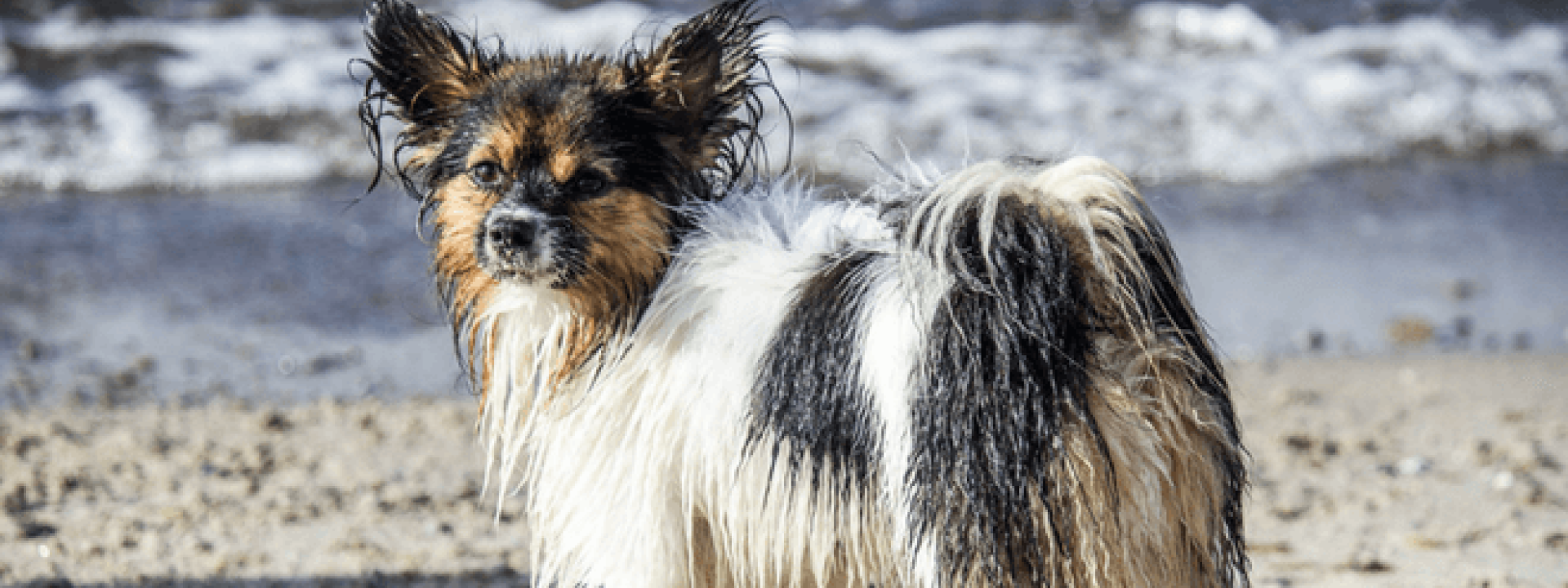Summer’s just around the corner! Is your pet eager to get in the water? Be sure to read these safety tips before diving in at the beach or pool with your furry friends.
Never leave pets unattended.
All open bodies of water, including pools, oceans, lakes, rivers, ponds and even hot tubs can pose a threat to your pet if left unsupervised. Remember that pets are like small children and need to be monitored at all times. No pet should be allowed near the pool without adult supervision.
Teach pets to swim.
Many people believe that dogs—and yes, even cats—are instinctual swimmers, but this is simply not true. Some breeds, such as bulldogs, corgis, pugs and basset hounds, are just not built for water and therefore are not natural swimmers. Very young and very old pets are generally poor swimmers as well. The bottom line: Never assume that any pet can swim.
The first step in teaching a dog to swim is to properly introduce him/her to the water and make sure he/she knows how to exit safely. Pool safety training can help dogs become more comfortable in the water by teaching them how to locate the stairs and that the side of the pool is not a safe way out.
Obedience training—and recall training in particular—is also important. Reliable recall skills could prevent a dangerous situation if your dog swims out further than his/her comfort zone.
Invest in water safety products.
Better safe than sorry! Water safety products for pets include ramps and personal flotation devices such as life jackets, among other items. While proper training is essential, safety measures like the Skamper-Ramp can give pool owners some extra peace of mind.
Life jackets can be especially helpful for breeds not particularly built for swimming or beginners who may tire or panic easily in the water. When using a life jacket, make sure it fits your dog snugly so he/she cannot slip out of it, but also monitor your dog closely to ensure he/she does not get too hot.
Limit pool access.
Did you know that some state laws require new or remodeled pools to feature at least one safety device, such as a cover, alarm or protective fencing? Be sure to check your state's laws about pool safety.
These measures are especially important for any pets who are left outside unsupervised. Keep in mind, however, that some methods may work better than others, especially when you are away from home.
Floating pool covers are not recommended for pet owners. The solid appearance of these covers can be deceptive and dangerous for pets. Floating covers can be very disorienting for pets who have fallen into the water and lead to panic, making it nearly impossible for your pet to find his/her way out or even causing him/her to become trapped underneath. A safer bet is to invest in a safety cover that fits over the entire pool and can fully support your pet’s weight.
Keep indoor pets safe by ensuring that all doors to the pool area securely closed.
No drinking!
While the ingestion of some pool or ocean water is generally unavoidable, you should not allow your dog to make a habit of it. Pool water contains chlorine and other chemicals that can upset your dog’s stomach. Salt water is also a no-no, as it can lead to vomiting, diarrhea and dehydration or even more severe symptoms (salt poisoning). Keep in mind, also, that water (particularly the stagnant kind) is often a good host for bacteria in the environment. Be sure to have plenty of fresh water on hand for your dog and offer it regularly.
Rinse off.
It is important to always rinse your dog with fresh water after a swim. Just like humans, chlorine and other pool chemicals can be irritating to your dog’s skin and eyes. Ear infections are also common in water-loving dogs. If your dog spends a lot of time in the pool, ocean or other body of water, we recommend flushing his/her ears with a mild cleanser after every swim.

